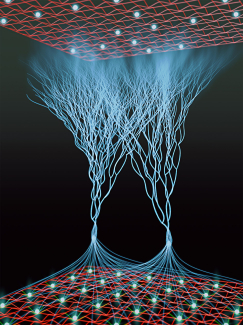JILA Fellow and NIST physicist Adam Kaufman, alongside his dedicated team, has garnered significant attention in a Physics World article for their innovative work in quantum physics. The team’s research has resulted in developing a boson sampler that utilizes atoms instead of photons, marking a significant advancement in the simulation of complex quantum states. The results of their work were recently published in Nature.
The research involved placing 180 strontium-88 atoms into a 48×48 site square optical lattice potential. This approach allowed the team to accurately determine quantum states more accurately than what is currently feasible with classical computers. Using atoms, which interact more strongly than photons, provides a promising platform for future quantum computing and the simulation of condensed-matter systems.
The study demonstrated that the atoms were around 99.5% indistinguishable, a critical factor for the accuracy of the boson sampler. The team’s next steps involve exploring their system's potential as a platform for reprogrammable quantum logic, with implications for universal quantum computation and condensed matter physics simulations.
Written by Kenna Hughes-Castleberry, JILA Science Communicator





